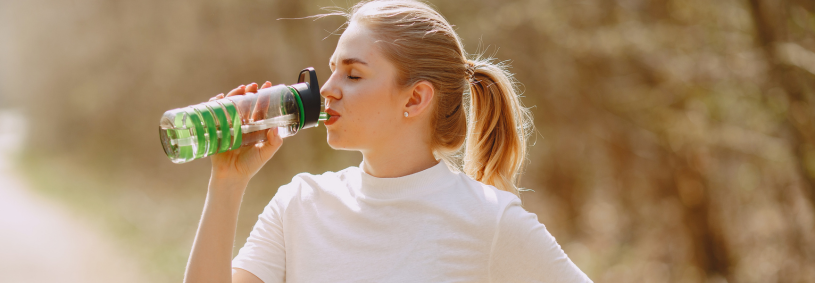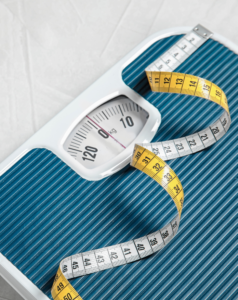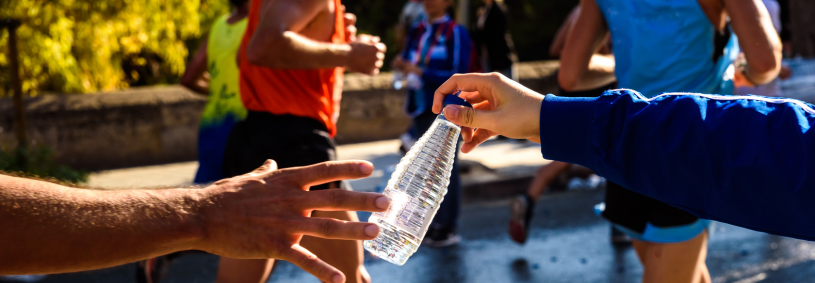Hydration and Electrolytes: Why it Matters for Performance and Sport
- Blog
- Hydration and Electrolytes: Why it Matters for Performance and Sport

1. Hydration and Performance: The Link You Can’t Ignore
Water makes up about 60% of total body weight and is critical for nearly every cellular function. Dehydration affects thermoregulation, cardiovascular function, and mental sharpness. A mere 2% drop in body weight through fluid loss can impair performance, particularly in endurance events, where core temperature and heart rate are already elevated (Sawka et al., 2007). Dehydration also increases the risk of heat illness, especially in hot and humid environments.
✅ Pro Tip: Hydrate early. Aim for 400–600 mL of water 2–3 hours before your workout or competition.
2. The Role of Electrolytes in Muscle and Nerve Function
Electrolytes—primarily sodium, potassium, calcium, and magnesium—are minerals that carry electrical charges. They are vital for maintaining fluid balance, transmitting nerve impulses, and supporting muscle contractions. Sodium is the most heavily lost electrolyte in sweat, followed by chloride and then potassium. Even mild imbalances can lead to cramping, fatigue, and poor muscle coordination (Maughan & Shirreffs, 2008).
✅ Pro Tip: Include a balanced electrolyte mix in workouts lasting over an hour, especially in heat.
3. Why Thirst is Not Enough
Relying solely on thirst can lead to underhydration. The thirst response lags behind actual fluid loss, particularly during prolonged activity. Research has shown that athletes often fail to fully rehydrate when drinking based only on thirst cues (Kenefick, 2018).
✅ Pro Tip: Set a schedule to drink small amounts of fluid every 15–20 minutes during extended activity.
4. Sweat Rate: Know Your Numbers
Sweat rate is the cornerstone of personalised hydration. While most people sweat between 0.5–2.0 L per hour, this varies by fitness level, temperature, humidity, and clothing. Measuring your sweat rate allows you to develop a customised hydration strategy. Once you know the amount you sweat you should aim to replace this amount but never go over it. It is also not necessary to replace it all during exercise (unless in a long endurance event which is a separate topic in itself). Aim to replace most fluid losses during sport and then hit the remaining amount within a few hours of finishing the session. High volume athletes want to aim for replacing 150% of losses over the day as sweat rates stay higher due to increased metabolic rate post exercise.
 ✅ How to Measure:
✅ How to Measure:
1. Weigh yourself nude before and after a one-hour session.
2. Subtract post-exercise weight from pre-exercise weight.
3. Add any fluid consumed during the session.
4. This gives you your sweat rate in L/hour. (approximately)
5. Sodium Loss: Why It Matters Most
Sodium maintains plasma volume, helps with nutrient transport, and supports nerve transmission. In long or hot sessions, failure to replace sodium may result in hyponatremia—a dangerous condition characterised by nausea, confusion, and even seizures. Athletes with high sodium sweat losses (>1000 mg/L) require more strategic sodium intake.
✅Pro Tip: If you see white salt rings on your clothing or experience frequent cramping, you’re likely a ‘salty sweater’. Use a drink with 500–1000 mg sodium/L or salt your food intentionally. It is also possible to test your levels of electrolyte losses to be more exact. There are now wearable devices that can do these calculations for you if you need.

6. The Risk of Overhydration and Hyponatremia
Overhydration, especially when drinking only water, can dilute blood sodium levels. Known as exercise-associated hyponatremia (EAH), this condition is most common in endurance events over 4 hours (Hew-Butler et al., 2015). Symptoms include bloating, headache, confusion, and in severe cases, seizures or death.
✅ Pro Tip: Don’t force water. Use electrolyte beverages that match your sweat profile and avoid drinking more than 800–1000 mL per hour unless you’ve verified high sweat rates. I am a huge fan of electrolyte sachets, there are many on the market these days that do not contain any sugar. Though be advised there are times when a sports drink is necessary as the body during certain sports sessions also requires fueling.
7. Adjusting for Heat, Humidity, and Altitude
Training or competing in the heat increases sweat output and electrolyte loss. At altitude, fluid loss through respiration rises, and dry air accelerates dehydration. Acclimatisation over 7–14 days can reduce sweat sodium concentration and improve fluid balance.
✅ Pro Tip: Increase fluid and sodium intake when adjusting to hot or high-altitude environments. Use pre-cooling techniques such as ice slurries to manage core temperature. If you are travelling and racing in the heat it is best to arrive as many days as possible before your event to minimise the heats impact on your performance.
8. Diet’s Role in Hydration
Glycogen is stored in the muscles and the liver along with water—about 2.5 grams of water per gram of glycogen. Low-carb diets, fasting, or ketogenic protocols reduce glycogen stores, leading to lower fluid retention and increased electrolyte needs. Athletes on these diets are more prone to early dehydration.
✅ Pro Tip: If following a low-carb diet, consider increasing daily sodium intake and supplement magnesium and potassium as needed.
9. Testing and Personalisation
Hydration is not one-size-fits-all. Testing sweat rate and sodium concentration helps individualise fluid and electrolyte replacement. Some advanced tools include wearable sweat sensors or lab-based sweat analysis. A few points above is a description on self-testing fluid losses.
✅ Pro Tip: Re-test your hydration needs as your training volume, climate, or diet changes. Use this data to create a pre-, during-, and post-hydration protocol.
10. Effective Rehydration Strategies
Post-exercise, rehydration should aim to restore both fluid and electrolytes. The general guideline is to consume 150% of the weight lost in fluid over 2–4 hours. For example, if you lost 1 kg (1 liter), drink 1.5 liters with electrolytes post-session. Foods rich in sodium (like broth, pickles, salted nuts) can aid this process.
✅ Pro Tip: Use healthy milk or milk alternatives, sports drinks, or oral rehydration solutions that contain sodium and carbohydrates for optimal recovery. Coconut water is good for rehydration but needs added sodium as it is too low, it also contains very few carbohydrates so make sure you are eating your carbs if having coconut water.
Final Thoughts
Hydration and electrolyte strategies are fundamental to performance and safety. By understanding your unique needs—sweat rate, sodium loss, training demands—you can develop a tailored plan that supports optimal energy, endurance, and focus. Consider hydration as a core part of your training strategy, not an afterthought.
Have a look at my home-made sports gels/drinks recipe.
References
- Sawka, M.N. et al. (2007). American Journal of Clinical Nutrition, 85(2): 564–572.
- Maughan, R.J., & Shirreffs, S.M. (2008). Clinical Journal of Sport Medicine, 18(5): 432–438.
- Kenefick, R.W. (2018). Sports Medicine, 48(S1): 153–159.
- Hew-Butler, T. et al. (2015). Clinical Journal of Sport Medicine, 25(4): 303–320.
- Shirreffs, S.M., & Maughan, R.J. (1998). Journal of Applied Physiology, 84(4): 1151–1158.
More about the author

Kira Sutherland - BHSc, Grad Dip Sports Nut, Adv Dip Nat, Adv Dip Nut, Adv Dip Herbal Med, Dip Homoeop. MATMS
Kira Sutherland is a highly experienced Naturopath and Sports Nutritionist with over 30 years in clinical practice and 25 years of lecturing at the undergraduate level. She combines the principles of naturopathic medicine with the science of sports nutrition to offer a truly holistic approach to health, performance, and long-term wellbeing. A passionate educator, mentor, and international speaker, Kira is known for her engaging, down-to-earth teaching style and her ability to make complex health concepts practical and easy to understand. An endurance athlete herself, Kira is also the current Sports Nutritionist for the TCS Sydney Marathon and can be found skiing the mountains of Canada or living with her family in Sydney Australia.
https://www.instagram.com/uberhealth/#
Kira Sutherland – Business Owner – Uberhealth | LinkedIn
Other Blog In This Category

The ATMS Research Grant allocates up to AU$20,000 to support natural medicine research that aligns the goals of the ATMS Strategic Plan.

At the ATMS AGM, the 2024 - 2025 Simon Schot Education Grants were awarded to the following ATMS member.
